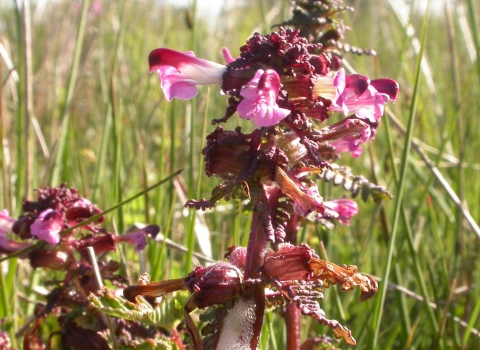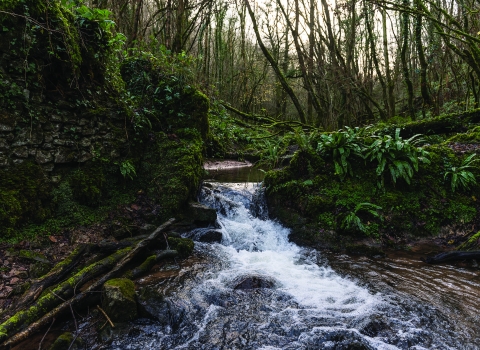Betony - Cath Shellswell
Hollow Marsh Meadow
Location
Know before you go
Dogs
Visit the 'Dog walking on reserves' page in the Contact section for more information.
When to visit
Opening times
Open at all timesBest time to visit
April to JulyAbout the reserve
Hollow Marsh Meadow comprises two damp unimproved neutral meadows and a block of ancient woodland. In the spring and summer the meadows have a rich variety of herbs like the low scrambling yellow Lady’s Bedstraw, pink Betony and the deep blue/lilac flowers of Devil’s-Bit Scabious, Lady’s Mantle and Common and Heath Spotted orchids. Also look out for Dyers Greenweed. The flowers of Spring and Summer attract a great variety of butterflies including Silver Washed Fritillary, Dingy and Small Skipper, Small Copper, Marbled White and Meadow Brown.
The Cam Brook, the stream that flows through the meadow is edged with lush plants including Fleabane, Hemlock Water Dropwort, Meadowsweet and Purple Loosestrife. Also found are Fool’s Water-cress, Brooklime, Cuckoo Flower and Marsh Valerian. The river bank is a good place to look for dragonflies and damselflies such as the Beautiful Demoiselle which zoom about chasing their insect prey. Yellowhammers can be regularly seen here. The hay meadow is an amazing place to see many butterflies, crickets and grasshoppers; it really does throng with life and can be actually quite noisy with buzzing insects on a warm dry day.
Don’t forget that a hay cut takes place on part of the reserve anytime after July 15th. when the weather is suitable so be sure to visit before then.
Birds of prey including Kestrel and Buzzard, are regular visitors throughout the year. Snipe come to feed in the damp fields during winter.
Roe deer are often spotted on the reserve which is also home to Short-tailed Voles and Dormice. In summer bats may also be glimpsed hunting over the reserve at dusk.
The ancient woodland of Long Dole Wood is dominated by Oak and Ash, with Hazel, Holly, Field Maple, Wych Elm, Spindle, Crab Apple and large Hornbeam coppice stools. In Spring Bluebells, Wood Anemone and Violets carpet the woodland floor. Later in the summer look for the prettily named Enchanter’s Nightshade and Broad-leaved Helleborine orchids.
Hedgerows of Blackthorn and Hawthorn form the boundaries of the reserve and there are a number of lovely old large Oak standards in the hedges.
Reserve conservation management - Summer grazing in the eastern meadow keeps competitive species down whilst allowing the plants to flower. The northern meadow is managed as a traditional hay meadow; this means that the flowers are left to set seed before being cut for hay after mid-July. The meadow is then after-grazed to help control the scrub and keep the grass short, which aids germination. Invasive species and encroaching scrub are controlled to protect the grassland. The woodland is managed with minimal intervention to maintain a good structure and excellent ground flora.
Access and safety
• The paths and tracks have uneven surfaces in places and can be slippery or wet and boggy.
• Take care on the open-sided bridges and around the watercourses.


